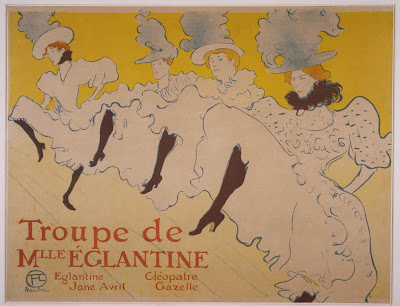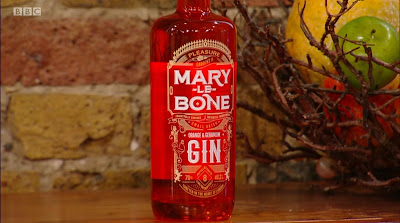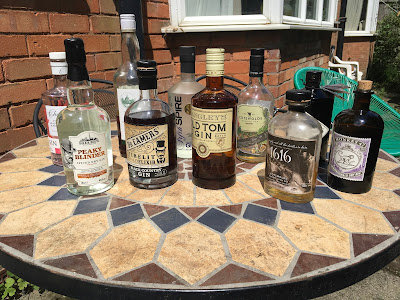The BBC, mostly quite dire, has its moments. Today’s
Saturday Kitchen Live reminded me that it is World Gin Day, a beacon shining out across a turbulent sea of statue-demolishing and lurking viruses. What fun for Matt Tebbutt and Olly Smith and their guests to sink several glasses of gin and get paid for doing so. And of course it is the official birthday of one of the world most famous gin sippers - The Queen no less.
Olly Smith waxed lyrical for various reasons about 4 different gins but was rather cool on the subject of one of my favourites, Tom gin. Well, each to their own. First he recommended the wannabe
Gordon’s lookalike,
Greyson’s, from
Aldi on the basis of its drinkability for the excruciatingly modest price of £5.99 per bottle. Good for cocktails especially. It’s probably as authentic as
Lymeswold cheese but then again I did really like Lymeswold.
Then on to the better quality and obviously rather more expensive London Dry Gin,
Dartmouth,
about which regular presenters and guests alike waxed lyrical.
And then on, representing the flavoured gins, to the West Midlands gin, Chase farm’s Pink Grapefruit and Pomelo gin from Herefordshire, which I love served with tonic and a slice of pink grapefruit and a dish of green olives. I first tasted it while staying at the wonderful Fishmore Hall (home of Forrell’s) just outside Ludlow where I was staying for the 2019 Ludlow Food Festival and so in love with it was I that I had to buy a bottle from Chases’ stand at the festival. And so in love with it am I that have been forced to go and make myself a glass just now and remind myself of what a fabulous drink it is.
Smith’s final recommendation was from London - well nobody’s perfect - the exquisite-sounding Mary-Le-Bone Orange and Geranium Gin. From Smith’s description this looks like a road to go down.
But what of gin from the West Midlands? Well we’ve already mentioned Chase from Herefordshire. So forgive me for getting out some of my collection. Here in Birmingham, or at least nearby, we have Langley’s Old Tom, vital to make a Tom Collins, but to be appreciated for its sweetness just with tonic, which drove the population of 18th century England down its Hogarthian gin-soaked state of inertia.
From the Black Country I have bottles of colour-changing Dr Eamer’s Firelit Elixir Black Country Gin (citrus, juniper, coriander, angelica, orris and cassia); from Greywood Distillery in Lichfield there is Fifth Spire Gin (“handcrafted in small batches using citrus fruits”); Peaky Blinders Spiced Dry Gin (Sadler’s Brewery in Lye near Stourbridge) with the label joyously reading “Produce of the British Isles by order of Sadler’s Peaky Blinder” (what fun).



We must not forget the fabulous Cotswold Gin from near Shipston-on-Stour in Worcestershire which is an excruciatingly delicious gin and which I first had the pleasure of sampling soon after its arrival on the scene at the wonderful No 33 The Scullery very soon after it opened in Stratford upon Avon. The distillery seems a little obsessed with its whiskeys and I think the gin was a step on the distillery’s road to whiskey production (we recall the whiskey-like 1616 Barrel-aged Gin, a part-bottle of which I still possess and know now that it assuredly does NOT go with tonic (I really should read the details printed on the label). The 1616 gin was marketed as honouring Shakespeare on the 400th anniversary of his death and claims to reflect the style of gin of his time being distilled from malt spirit in pot stills with “juniper and select botanicals” and “aged in American oak wine barrels”. A gem to hold on to till the right moment. Currently also in my collection is a partly used bottle of Cotswold’s Ginger Gin flavoured with orange peel, candied ginger, honey, juniper, and ‘woody spices’.

Back to Herefordshire and a gin which usually has a stall at the Ludlow Food Festival Gun Dog Gin originating from Ledbury which I always like to visit. The rhubarb gin is a great pleasure to me.
And from Bishops Castle in Shropshire I have a very nicely presented bottle Chilton Seville Orange Gin which I bought at Ludlow in a nice little sack bag.
So, as I leave the West Midlands for a second or two (metaphorically not physically, you understand), I confess that I have a special place in my heart for a glass of Hendrick’s and a nice little slice of cucumber and I still worship at the feet of Monkey 47, which I was informed by the excellent barman at Opheem, is best served with a slice of pink grapefruit and his belief on this matter was proven to be exactly correct. Of course if you go to Purnell’s Gingers Bar (pray to all that’s holy that it survives these difficult times) you can indulge yourself in a Glynn and Tonic which with Glynn Purnell’s wisdom is of course made from Monkey 47.

Finally let us return to my little corner of Birmingham, on the edge of Worcestershire, and look at this unpromising bottle of Sainsbury’s Dry Gin and ask ourselves what exactly is inside. Answer:- my ten year old homemade Damson Gin. Made with damsons grown from trees in the garden and really rather fine. The good news is that, after a couple of terrible years, the damsons are growing beautifully this year ready for a new batch of damson gin to be made as the year moves along. So this really is a rather enjoyable World Gin Day.


















































